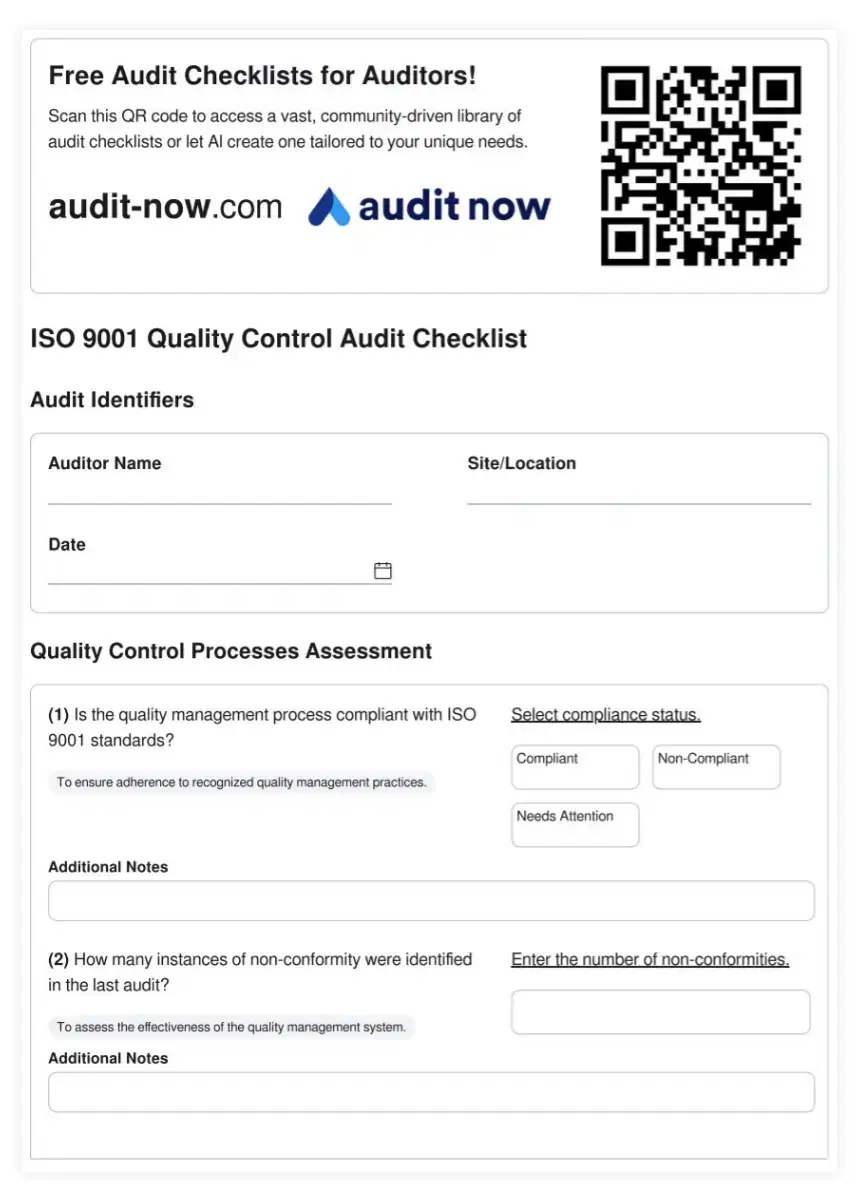EASA Part-M: Ensuring Continued Airworthiness in Aviation

Featured Checklist

EASA Part-M Aircraft Maintenance Program Audit Checklist
The EASA Part-M Aircraft Maintenance Program Audit Checklist is a crucial tool for ensuring the effectiveness and compliance of maintenance programs in the aviation industry. This comprehensive checklist is designed to evaluate the development, implementation, and management of aircraft maintenance programs as per European Aviation Safety Agency (EASA) Part-M regulations. By thoroughly assessing maintenance intervals, tasks, and procedures, this checklist helps organizations optimize their maintenance strategies, enhance aircraft reliability, and maintain the highest standards of safety and airworthiness.
Understanding EASA Part-M
EASA Part-M is a crucial regulation in the aviation industry, focusing on the continued airworthiness of aircraft. It sets out the requirements for maintaining aircraft registered in EASA member states, ensuring they remain safe and airworthy throughout their operational life. This regulation applies to all types of aircraft, from small private planes to large commercial airliners, and covers various aspects of maintenance, including planning, execution, and record-keeping.
Key Components of EASA Part-M
EASA Part-M is divided into several subparts, each addressing specific areas of aircraft maintenance and airworthiness. These include:
- Subpart B: Accountability
- Subpart C: Continuing Airworthiness
- Subpart D: Maintenance Standards
- Subpart E: Components
- Subpart F: Maintenance Organization
- Subpart G: Continuing Airworthiness Management Organization (CAMO)
- Subpart H: Certificate of Release to Service
- Subpart I: Airworthiness Review Certificate
Importance of EASA Part-M Compliance
Compliance with EASA Part-M is not just a regulatory requirement; it's a fundamental aspect of aviation safety. By adhering to these regulations, aircraft operators and maintenance organizations ensure that aircraft remain in a condition for safe operation. This compliance helps prevent accidents, extends the lifespan of aircraft, and maintains public confidence in air travel. Moreover, it creates a standardized approach to aircraft maintenance across EASA member states, facilitating smoother operations and transfers of aircraft between different countries and operators.
Start Your Free Trial
Discover how easy audits and compliance can be. No credit card required!
Try now!
Core Audit Requirements & Importance of Checklists
Auditing plays a crucial role in ensuring compliance with EASA Part-M. Core audit requirements focus on verifying that all aspects of the regulation are being followed correctly. This includes checking maintenance records, inspecting facilities, reviewing staff qualifications, and assessing the overall management system. Checklists are invaluable tools in this process, providing a systematic approach to auditing. They ensure that no critical areas are overlooked, maintain consistency across different audits, and serve as a clear record of what has been inspected. Well-designed checklists cover all aspects of EASA Part-M, from documentation and record-keeping to actual maintenance practices and airworthiness management procedures.
Challenges in EASA Part-M Implementation
Implementing EASA Part-M can be challenging for many organizations. One of the main difficulties is keeping up with the frequent updates and amendments to the regulation. Aviation is a dynamic industry, and regulations must evolve to address new technologies and safety concerns. This requires continuous learning and adaptation from maintenance organizations and operators. Another challenge is the complexity of the regulation itself. EASA Part-M covers a wide range of topics and can be intricate in its requirements, making it difficult for smaller organizations with limited resources to fully comprehend and implement all aspects of the regulation.
Best Practices for EASA Part-M Compliance
To effectively comply with EASA Part-M, organizations should adopt several best practices. First, establishing a robust quality management system is essential. This system should include regular internal audits, clear documentation processes, and effective communication channels. Second, investing in staff training and development is crucial. Employees need to understand not just the technical aspects of their jobs but also the regulatory requirements that govern their work. Third, leveraging technology can greatly aid in compliance. Software solutions can help manage maintenance schedules, track component lifecycles, and maintain accurate records. Lastly, fostering a culture of safety and compliance within the organization is vital. This means encouraging open communication about safety concerns and promoting a proactive approach to identifying and addressing potential issues.
Future Trends in Aircraft Maintenance Regulations
The future of aircraft maintenance regulations, including EASA Part-M, is likely to be shaped by several emerging trends. One significant trend is the increasing use of data analytics and predictive maintenance technologies. These advancements allow for more precise scheduling of maintenance activities, potentially leading to changes in how regulators approach maintenance intervals. Another trend is the growing focus on environmental sustainability in aviation. This may result in new regulations or amendments to existing ones to address the environmental impact of maintenance activities. Additionally, the rise of unmanned aerial vehicles (UAVs) and electric aircraft is likely to necessitate updates to maintenance regulations to cover these new technologies. As the aviation industry continues to evolve, EASA Part-M and similar regulations will need to adapt to ensure they remain effective in maintaining aircraft safety and airworthiness.
Most Popular 8 EASA Part-M Checklists
EASA Part-M Subpart G CAMO Audit Checklist